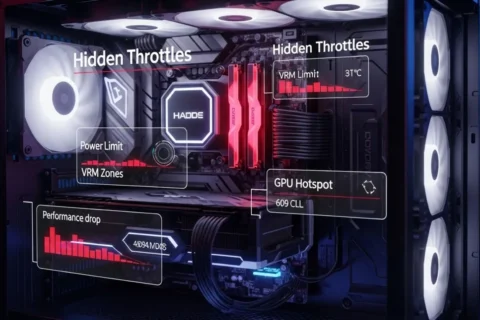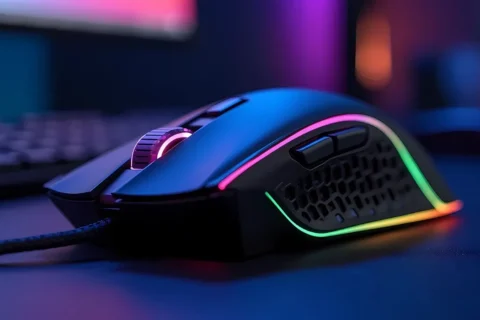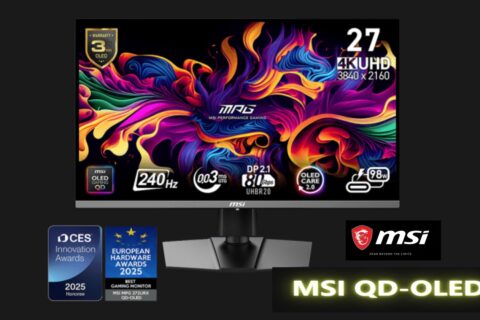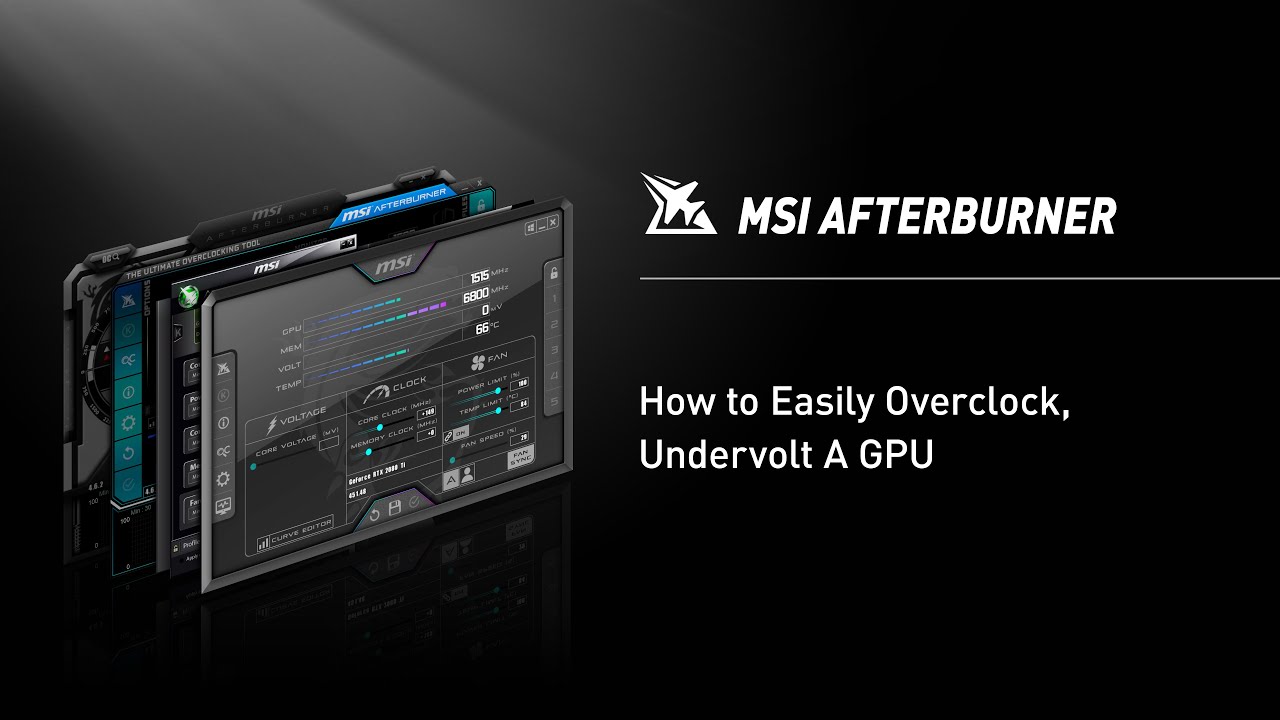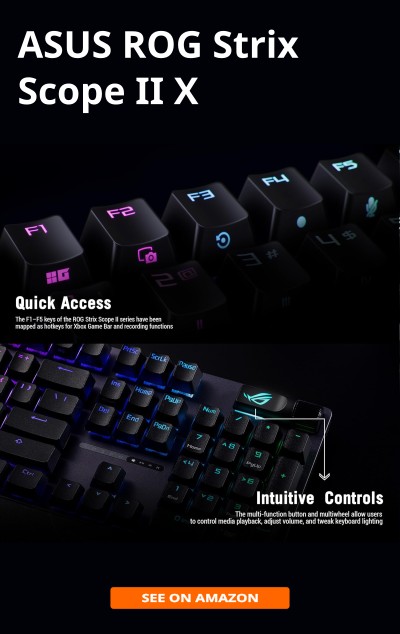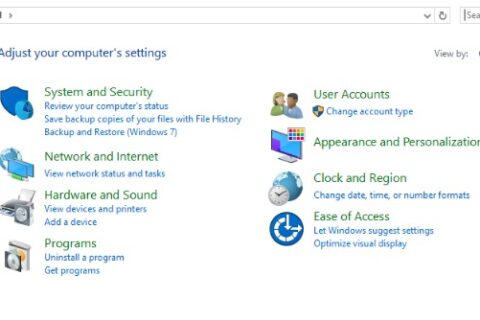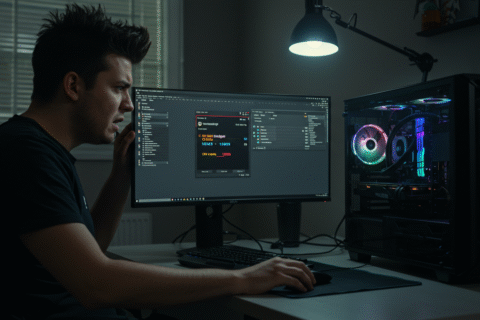Let me guess: you downloaded MSI and bitched on how to use MSI Afterburner, and blankly stared at the interface for 12 seconds, and quietly closed the window. I’ve been there. It looks like a cockpit from a 1997 flight sim, but trust me, it’s worth learning.
This guide will show you exactly how to use MSI Afterburner, for overclocking, undervolting, fan control, and in-game monitoring, without turning your GPU into toast. Let’s walk through it like sane people who don’t want to melt their rigs, shall we?
So What Is MSI Afterburner, and Why Do You Need It?
MSI Afterburner is a free GPU tuning tool that works on almost every card, even if it’s not made by MSI. You can use it to overclock, undervolt, monitor temperatures, customize fan curves, and see live performance stats while gaming. If you game on PC and care even remotely about performance or temps, this is your toolkit. If you’re also using HWiNFO or other temp monitoring tools, Afterburner pairs well with them.
Before You Click Anything: Here’s What MSI Afterburner Can’t Do
- It won’t make your 7-year-old GPU “next-gen.”
- It won’t fix bad airflow or a dying PSU.
- It doesn’t work on CPUs (stop asking).
It’s powerful, yes, but it’s not a cheat code. Used wrong, it can cause crashes, overheating, or system instability. Used right? It’s brilliant.
Step 1 – Download It From the Right Place (Yes, Really)
Only download from the official MSI site: MSI Afterburner Download. You’ll also get RTSS (RivaTuner Statistics Server) bundled in, that’s the bit that shows your FPS and temps in-game. Do not install from third-party sites unless you like malware with your metrics.
Step 2 – Learn to Read the Interface Before You Tweak Anything
The main UI looks like it was designed in 2006, but each dial matters. Focus on:
- Core Clock (MHz): GPU speed
- Memory Clock (MHz): VRAM speed
- Temp Limit: Prevents overheating
- Fan Speed: Auto or manual control
- Voltage Control: Leave it alone unless you know what you’re doing
Step 3 – Safe Overclocking Basics (Without Killing Performance)
Here’s the golden rule: start small. Increase your core clock by 50–100 MHz, test in-game, then go higher in steps. Same with memory clock. If things crash, roll it back 25 MHz.
Use 3DMark or a demanding game to stress test. Watch temps and anything over 85°C is a red flag.
Step 4 – Undervolting: Cool, Quiet, and Smarter Than You Think
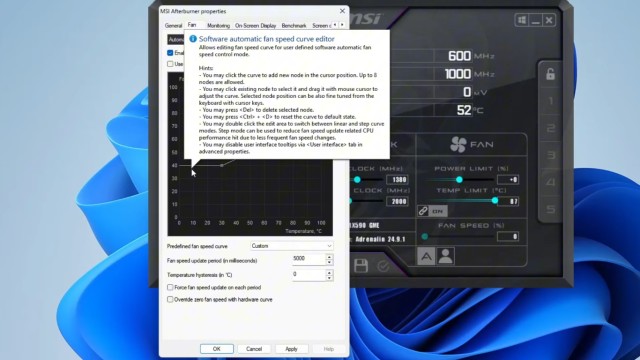
Undervolting is the opposite of overclocking, you’re lowering voltage while keeping stable performance. It reduces heat and power draw, especially on laptops or hot-running GPUs.
Use the Voltage/Frequency Curve Editor (Ctrl+F). Flatten the curve around your GPU’s boost clock, then apply and test. For example: If your card boosts to 1900 MHz at 1.1v, you might try 1900 MHz at 0.975v. For more advanced curve tuning, see our HWiNFO setup tips.
Step 5 – Set a Custom Fan Curve Like a Pro (Not a Jet Engine)
Click the gear icon → Fan tab → Enable user-defined software automatic fan control. Now build your curve:
- Idle (30–40°C): 20% fan speed
- Gaming (65–75°C): 50–65%
- High Load (80°C+): 85%+
This keeps things quiet until needed. Bonus tip: avoid abrupt jumps — they sound terrible and wear fans out faster.
Step 6 – Enable On-Screen Display (OSD) and Actually Monitor Stuff

Open Afterburner settings → Monitoring tab → Check the stats you want (GPU temp, usage, FPS, CPU, etc.) → Tick “Show in On-Screen Display.”
Make sure RTSS is running in the background. This overlay is your real-time performance dashboard.
Troubleshooting tip: If nothing shows in-game, check RTSS is allowed in your firewall or try running as admin.
Bonus: Save Your Profiles, Avoid Auto-Fail Settings
After tuning, hit the “Save” disk icon and assign to a profile slot. Click the Windows icon to auto-load on startup.
Don’t check the “Apply at startup” box until you’re 100% stable or enjoy bootloop roulette.
Common Mistakes, Myths, and Dumb Stuff I’ve Seen on Reddit
- “More voltage = more performance” – No. More heat and instability, maybe.
- “Undervolting is dangerous” – It’s literally the safer path.
- “MSI Afterburner doesn’t work with AMD” – False. It works fine, just limited by drivers.
Don’t believe every comment thread. Test things yourself.
The MSI Afterburner Setup You’ll Actually Use
- Core Clock: +100 MHz (test for stability)
- Memory Clock: +200 MHz (optional)
- Undervolt: Try 0.975v for same clocks
- Fan Curve: Smooth, custom, smart
- OSD: Temps, FPS, GPU usage in-game
Why It’s Still the Best Free Tool in PC Gaming
MSI Afterburner is aging, sure, but it’s still the most versatile, lightweight, and brutally useful GPU tool out there. Use it to learn your system, monitor performance, and avoid overpaying for performance you can unlock yourself.
Next up? Check out our HWMonitor guide if you want a lighter monitoring tool, or Fix-Your-Damn-PC Toolkit for a full system sanity check.



